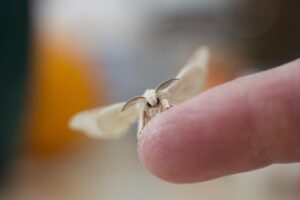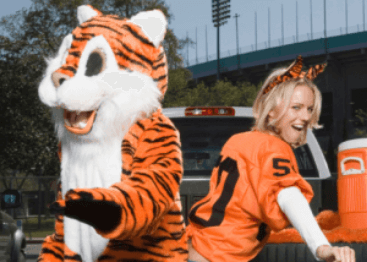10 Amazing Species That Lack Abilities You Never Realized Were Special
We tend to take certain things for granted in life. The sun rises in the east, tacos always hit the spot, and roosters crow at dawn. These are constants in our daily existence, shaping the way we perceive the world. But just because something has always been a certain way doesn’t mean it will remain so forever. It’s easy to fall into the trap of assumptions, like the ancient belief that the sun revolved around the Earth—an idea that was completely wrong.
The natural world is full of surprises, and life forms often operate in ways that defy our expectations. So, let’s take a closer look at some fascinating creatures and natural phenomena that break the mold and challenge our conventional thinking. These examples show that nature is never as predictable as we might like to believe, and sometimes, it’s downright bizarre. Prepare to have your mind blown by the unexpected.
10. The T. rex Probably Didn’t Roar

Think back to the iconic ending of Jurassic Park. The mighty T. rex stealthily sneaks into the visitor’s center, faces off against the velociraptors, and gives a fearsome roar that saves the day. The roar has since become synonymous with the T. rex in popular culture. But here’s the twist: scientific evidence suggests that the T. rex likely couldn’t roar at all.
Reconstructing the sounds of ancient creatures from fossil remains is no easy task. Paleontologists have been at it for decades, but it’s a difficult job, given the limited fossil evidence we have. Despite what Hollywood would have you believe, there’s no strong proof that dinosaurs like the T. rex had a larynx, the vocal organ most mammals use to produce their characteristic sounds—think of the roar of a lion or a bear.
Instead, modern birds, which are the closest living relatives to dinosaurs, use a structure called a syrinx to make sounds. While it’s possible that some dinosaurs had a similar vocal structure, it’s more likely that only smaller, bird-like dinosaurs with arboreal lifestyles could produce sounds similar to bird calls.
So, if the T. rex made any noise, it was probably more akin to sounds produced by modern reptiles. Imagine the hissing of a snake or the low growls of a crocodile. The mighty T. rex likely wasn’t a silent creature, but it probably didn’t sound anywhere near as loud or dramatic as we hear in movies. Instead of roaring, it may have communicated through more subtle sounds, like humming or even drumming noises.
Even though it’s fun to imagine T. rex roaring in all its ferocity, the reality is much quieter and far more subtle—just another reminder of how Hollywood often plays fast and loose with the facts.
9. Why Cheetahs Aren’t Considered Big Cats
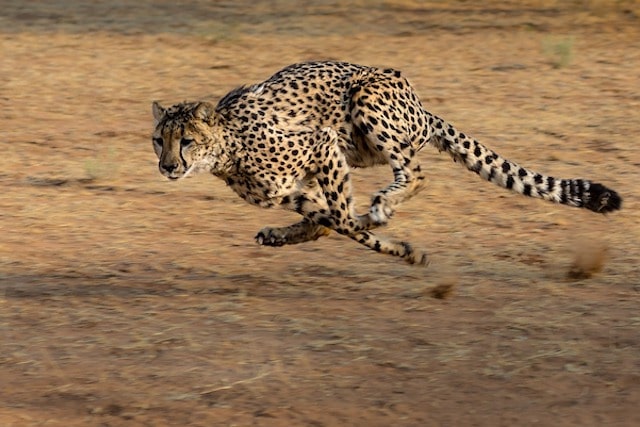
When we think of big cats, roaring instantly comes to mind. Lions, tigers, jaguars, and leopards all share this loud and powerful trait, making their presence known when they roar. If you’ve ever heard the deep, echoing sound in the wild, you know it commands attention. But here’s a surprising fact: not all big cats can roar—cheetahs, for instance, don’t have this ability.
Why is this important? The ability to roar is tied to a specific feature in a cat’s anatomy. Lions, tigers, and other big cats have a ligament in their larynx that lets them produce those spine-chilling roars. Cheetahs, on the other hand, are missing this crucial ligament, which means they simply can’t roar. This is one of the reasons why, despite their impressive size and incredible speed, cheetahs aren’t classified as “big cats” in the traditional sense.
But don’t be fooled by their lack of roaring. Cheetahs are still remarkable creatures. Weighing in at up to 140 pounds and reaching speeds of over 60 miles per hour, they are incredibly fast and agile. Interestingly, cheetahs are not part of the same family as lions or tigers. They belong to a distinct group called Acinonyx, a family that sets them apart from other large cats. Another fun fact? Unlike most other cats, cheetahs have semi-retractable claws, meaning their claws don’t fully retract like those of other big cats.
8. Earthworms Don’t Drown as Easily as You Think

Have you ever stepped outside after a good rainstorm and found the sidewalk covered with earthworms, looking all pale and damp? It’s a scene most of us are familiar with, and it’s easy to assume that these worms are trying to escape the rain, worried they’ll drown. After all, their burrows are likely filling up with water, right? Well, not exactly.
In fact, earthworms are far more resilient than we give them credit for. Unlike what many of us think, earthworms can’t drown easily. They breathe through their skin, which means as long as their skin stays moist, they can survive underwater for days. So, despite the rain, they aren’t in danger of drowning. Instead, scientists believe the worms come to the surface to move around more easily.
Burrowing in dry soil can be slow and cumbersome for earthworms because they need moisture to thrive. But when it rains, they can come up to the surface, stay hydrated, and get around much faster. It’s kind of like a convenience factor for them—rain makes traveling more efficient.
Another theory suggests that the sound of raindrops hitting the ground might confuse the worms. They could mistake the noise for a predator, prompting them to surface and move to safer ground. Either way, earthworms aren’t drowning—they’re simply taking advantage of the rain in their own way.
7. Baby Pandas Need Help to Poop
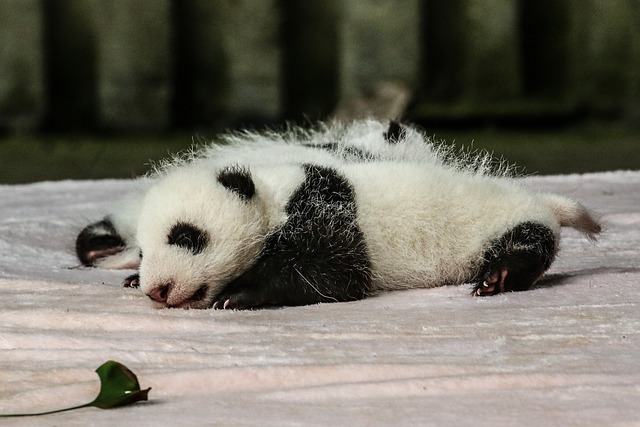
Pandas are often the subject of endless jokes online, thanks to their adorable and seemingly clumsy nature. Between their goofy antics and their limited diet, it’s easy to wonder how these lovable creatures manage to survive in the wild at all. But here’s a surprising and rather odd fact that will make you appreciate how unique pandas truly are.
When baby pandas are born, they are incredibly helpless—so much so that they can’t even go to the bathroom without help! At birth, they weigh about 1/900th of their mother’s size and are completely dependent on their mothers for survival. They can’t see, move, or even perform basic functions like pooping on their own. In fact, without assistance, they could potentially die from constipation.
Well, panda mothers have an unusual but necessary job. They can often be seen licking their cubs—not to groom them, but to stimulate excretion. It might sound strange, but it’s essential for their survival. For the first crucial week, the mother stays with her baby almost constantly, gently rubbing its belly to help with the process.
It’s a fascinating and somewhat comical aspect of panda life, showing just how fragile and unique these creatures can be, especially when they’re so young. But thanks to their mothers’ care, baby pandas get the support they need to grow and eventually become the playful giants we love to watch.
6. Reindeer Can’t Walk and Pee at the Same Time

We’ve all heard that classic joke about not being able to walk and chew gum at the same time. It’s a humorous way of saying someone can’t juggle two simple tasks at once. Well, it turns out, some animals have similar limitations when it comes to multitasking—and reindeer are a perfect example.
Unlike many animals that can go about their business while on the move, reindeer have a curious habit—they can’t walk and pee at the same time! In fact, these animals need to stop for a pee break, and when one reindeer stops, the entire herd follows suit. It’s a well-known behavior among Finnish reindeer herders, who even have a special term for the distance reindeer can walk before they need to pee.
This term, called poronkusema, refers to the distance a reindeer can cover—about six miles—before nature calls. Once they’ve reached this limit, the whole herd will take a break for a communal pee session. Afterward, they can walk another six miles before the process repeats itself.
It’s a quirky fact about reindeer that adds a unique layer to their already fascinating lives, showing how even the simplest creatures can have their own little oddities.
5. Birds Don’t Feel the Heat from Spicy Peppers

If you’ve ever watched the viral YouTube series Hot Ones, you know just how intense and sometimes painful the sensation of spicy food can be. The heat comes from capsaicin, the compound in hot peppers that gives your taste buds a fiery kick. But did you know that birds don’t experience the same fiery sensation that we do?
While humans have between 2,000 to 10,000 taste buds, allowing us to savor or suffer through the heat of spicy foods, birds have just 24 taste buds. That’s a pretty drastic difference, and it’s one of the reasons why birds don’t feel the burn from capsaicin. In fact, research shows that birds either lack capsaicin receptors altogether or have ones that are incredibly insensitive to the heat.
This unique trait could actually be an evolutionary advantage for plants. Since birds can eat spicy peppers without the discomfort humans feel, they are free to consume the peppers and spread the seeds far and wide, helping the plant reproduce. So, while we may grimace and reach for a glass of milk, birds can happily snack on spicy peppers without breaking a sweat.
4. Velociraptors Weren’t as Smart as Hollywood Shows
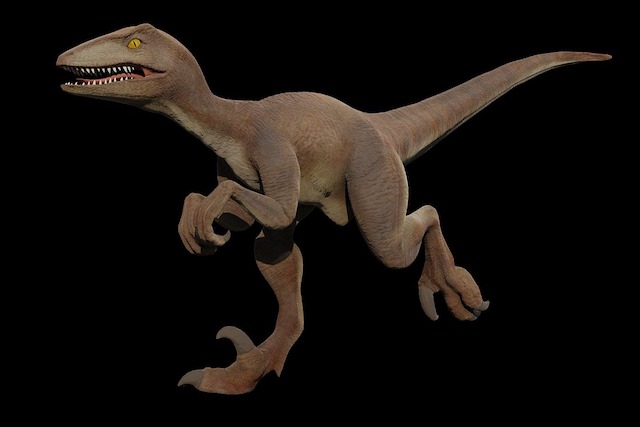
We’ve all seen the Velociraptors in Jurassic Park—sly, pack-hunting predators that seem to outsmart every human they encounter. Thanks to Hollywood, these creatures are often portrayed as incredibly intelligent, with some even believing they were the most cunning of all dinosaurs. But as is often the case with movies, the truth is a little less dramatic.
In reality, velociraptors weren’t the genius hunters the movies make them out to be. While they may have been smarter than some dinosaurs, calling them “intelligent” is a bit of a stretch. They were likely more clever than a rabbit, but probably not much smarter than a cat, based on the size of their brain cavity. So, smart for a dinosaur isn’t exactly a high bar!
Also, let’s not forget the movie raptors weren’t even true velociraptors. In fact, they were closer to Utahraptors, which were much larger. True velociraptors were about the size of a turkey, and their brains were far smaller than those of larger predators. So, despite their fearsome reputation in pop culture, real velociraptors were far less intimidating than the creatures we’ve come to fear on the big screen.
3. The Domestic Silk Moth Can’t Fly Anymore
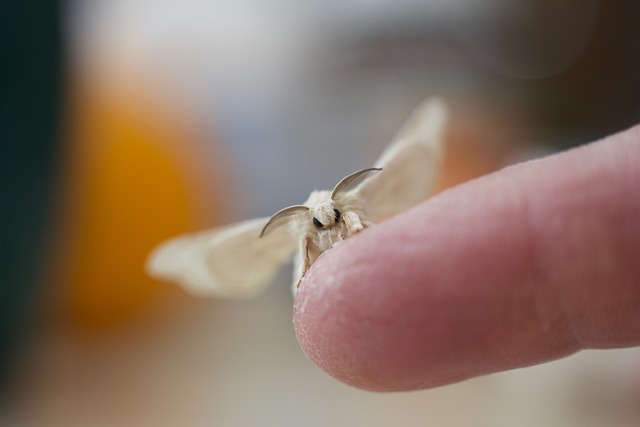
For thousands of years, humans have been cultivating silk moths to create the luxurious fabric that we all know and love. Agriculture has had a huge impact on these little creatures, but not always in ways you might expect. While humans have benefited greatly from silk production, it’s changed the very nature of the silk moth’s existence. In fact, the domestic silk moth can no longer fly, and it’s all thanks to the way we’ve bred them.
Once, when a silk caterpillar underwent metamorphosis and turned into a moth, it could take off and fly away. But after centuries of breeding and selective farming, this ability was bred out of them. The domestic silk moth has been so carefully cultivated by humans over generations that it no longer has the ability to fly, even if it wanted to. It’s an example of how our farming practices have deeply influenced not just the lives of plants and animals, but the very abilities they were once born with.
2. Cats and the Inability to Taste Sweetness

Cats can be notoriously picky when it comes to their food choices. Some are extremely finicky, turning their noses up at anything that doesn’t meet their exacting standards. Others, on the other hand, seem to have no qualms about munching on just about anything that crosses their path, from their regular cat food to more unusual items like salad, bread, and even rabbit droppings. Just like humans, cats can have some truly unpredictable tastes.
However, don’t let their sometimes strange eating habits fool you into believing that food is perceived in the same way by cats as it is by us. For instance, if your feline friend shows an apparent fondness for your ice cream, you might be inclined to think that they have a sweet tooth. But this is a common misconception.
Your cat may seem to enjoy all kinds of but the truth is that their preference is likely due to other factors such as the dairy content, the fat, or perhaps some other component that appeals to them. The fact of the matter is that cats are physically incapable of tasting sweetness.
Almost all other mammals possess the ability to taste sweetness. There is a specific gene, known as Tas1r2, that plays a crucial role in this process. This gene is responsible for sending sweet signals to the brain. The ability to taste sweetness is highly beneficial for survival. Sweetness is often associated with sugar, which means carbohydrates, and ultimately, energy. For most animals, the ability to detect sugar is essential for survival, as it provides a vital source of energy.
But cats, being obligores, have evolved differently. In most animals, the Tas1r2 gene works in conjunction with another gene, Tas1r3, to create the proteins that make up sweet receptors. However, cats did not evolve with this particular combination of genes functioning in the same way.
Now, when it comes to those cats that seem to go absolutely wild for sugary substances, there are a couple of theories. Researchers suggest that it’s possible that the Tas1r3 gene in cats allows them to taste sugar, but only at very high concentrations. Or perhaps, as some might humorously put it, cats are just inherently strange creatures with their own unique and inexplicable behaviors.
1. Not Everyone Thinks with an Inner Monologue

It’s easy to assume that the way you think is the way everyone else does. After all, when we wonder about other people’s behavior, it’s usually because we can’t quite figure out their thought process. But the truth is, not all of us experience thinking the same way. In fact, some people think in ways that might surprise you.
For many of us, an inner monologue is the primary way we process thoughts. It’s that internal voice you hear when you’re planning your day, working through a problem, or even just reflecting on something. You might “hear” your own thoughts as though you were talking to yourself in your own voice. But did you know that not everyone has an inner monologue at all?
Studies suggest that between 30% and 50% of people use an inner monologue to think, but that still means the majority of us have different ways of processing our thoughts. For some, visual thinking is more common, where they picture images or scenes in their minds, like imagining a future vacation or recalling a favorite meal, without any words involved. And for others, thinking may come through feelings or sensory awareness, like sensing the temperature or the sounds around them.
There’s even a thought process that feels more like instinct—quick, wordless, and based on emotions or gut reactions. It’s fascinating to consider that while most of us switch between different ways of thinking throughout the day, some people might never have an inner monologue at all.










